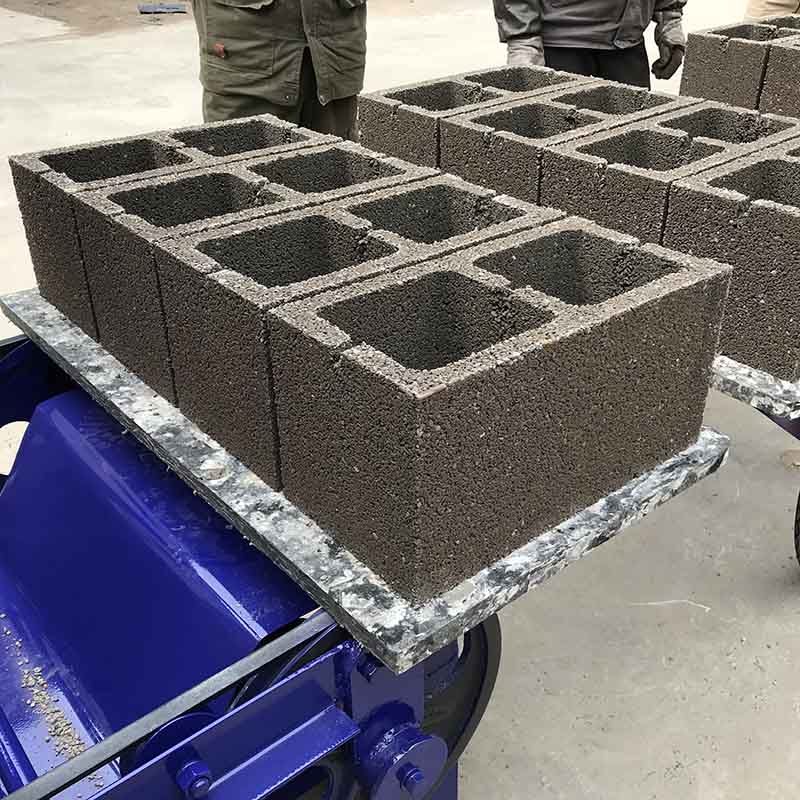
Image source:Aiwei block machine
Introduction
Resource consumption and waste generation are pressing environmental concerns in the construction industry. Traditional brick manufacturing processes heavily rely on the extraction of raw materials and generate substantial waste. However, the emergence of brick making machines has the potential to revolutionize the industry by addressing these challenges. This article examines the implications of brick making machines on resource consumption and waste generation, highlighting their benefits in terms of material conservation, waste reduction, and sustainable resource management.
Material Conservation and Resource Efficiency
One of the significant implications of brick making machines is their ability to promote material conservation and resource efficiency. These machines utilize a wide range of waste materials, including construction and demolition waste, fly ash, slag, and even plastic waste, to produce bricks. By transforming these waste materials into construction products, brick making machines reduce the demand for virgin resources such as clay and sand. This, in turn, conserves natural resources and minimizes the environmental impact associated with their extraction.
Moreover, the utilization of waste materials in brick production diverts them from landfills, extending their useful life and reducing the amount of waste generated. This aligns with the principles of a circular economy, where materials are kept in use for as long as possible, and waste is minimized through recycling and reuse.
Waste Reduction and Landfill Diversion
Traditional brick manufacturing processes generate significant amounts of waste, both during the production and construction phases. These wastes include rejected bricks, excess clay or sand, and demolition debris. Brick making machines provide a sustainable solution to reduce waste generation and divert waste from landfills.
By using construction and demolition waste as a raw material, brick making machines turn what would have been discarded into valuable construction products. The waste materials are crushed, sieved, and mixed with binders to create durable and high-quality bricks. This waste reduction and landfill diversion contribute to a more sustainable and circular approach to construction.
Energy Conservation and Emissions Reduction
Another implication of brick making machines is the potential for energy conservation and emissions reduction. Traditional brick manufacturing often involves energy-intensive processes, such as firing bricks in kilns. This consumes significant amounts of fuel and releases greenhouse gas emissions, contributing to climate change.
Brick making machines, on the other hand, eliminate the need for firing by utilizing alternative methods such as hydraulic pressure or mechanical compaction to form the bricks. This not only saves energy but also reduces carbon emissions associated with brick production. Additionally, the use of waste materials in brick making further offsets the carbon footprint by avoiding the energy-intensive extraction and processing of raw materials.
Water Conservation
Water scarcity is a growing concern in many regions worldwide. Traditional brick manufacturing requires substantial amounts of water for clay preparation, molding, and curing processes. In contrast, brick making machines often require less water for their operation. Some machines use hydraulic pressure or mechanical means to form the bricks, reducing the need for water-based processes.
By minimizing water consumption, brick making machines contribute to water conservation efforts, particularly in water-stressed areas. This supports sustainable resource management and helps address the challenges posed by water scarcity in the construction industry.
Improved Construction Practices and Quality Control
Brick making machines also have implications for improved construction practices and quality control. The use of these machines allows for greater consistency and uniformity in brick production. Each brick is formed under controlled conditions, ensuring precise dimensions and structural integrity. This results in improved construction quality, reducing the need for rework and enhancing the overall performance and durability of buildings.
Moreover, brick making machines offer design flexibility, enabling the production of bricks with specific properties and characteristics. For example, additives can be incorporated into the brick mix to enhance thermal insulation, fire resistance, or acoustic properties. This customization allows for tailored solutions to meet the diverse needs of different construction projects.
Economic Opportunities and Job Creation
The implications of brick making machines extend beyond environmental benefits. The adoption of these machines can create economic opportunities and generate employment. As the demand for sustainable construction materials grows, businesses involved in the production, distribution, and maintenance of brick making machines can thrive. Additionally, the operation and maintenance of these machines require skilled workers, leading to job creation and skill development within local communities.
Challenges and Considerations
While brick making machines offer significant implications for resource consumption and waste generation, there are several challenges and considerations to address. Firstly, the initial investment in brick making machines can be substantial, particularly for smaller-scale operations or resource-constrained regions. Adequate financial resources and infrastructure support are necessary to facilitate their adoption.
Furthermore, the quality and performance of bricks produced by these machines should meet industry standards and regulations. Ensuring proper quality control measures and compliance with building codes is essential to ensure the structural integrity and safety of constructed buildings.
Additionally, the availability and accessibility of waste materials suitable for brick production can vary depending on the region. Establishing efficient waste management systems and promoting effective waste sorting and collection practices are crucial to ensure a steady supply of suitable raw materials for brick making.
Conclusion
Brick making machines have transformative implications for resource consumption and waste generation in the construction industry. By utilizing waste materials, reducing the demand for virgin resources, and diverting waste from landfills, these machines support material conservation, waste reduction, and sustainable resource management. They also contribute to energy conservation, emissions reduction, water conservation, and improved construction practices. Moreover, the adoption of brick making machines creates economic opportunities and promotes job creation. As we strive for a more sustainable and circular construction sector, brick making machines offer a promising solution to address the environmental challenges associated with traditional brick manufacturing.
